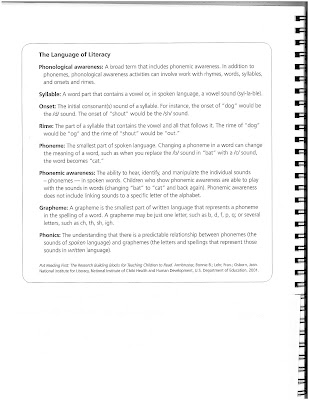"How we read to children is as important as how frequently we read to them."
-Multnomah County Library
-Multnomah County Library
Dialogic Reading is an important method developed by researchers to get children more activity involved when a story is read to them. Children learn more when they participate. With Dialogic Reading the adult helps the children become the tellers of the story. The adult becomes the listener, the questioner, and the audience for the children. Think of it as children and adults having a conversation about the book.

Dialogic Reading is based upon three techniques:
- Asking "What" Questions:
- Point to the item in the book and say "What's this?" or "What's this called?".
- Avoid questions that the children can answer with a "yes" or "no" or by pointing.
- Repeat what the children say. Let them know the answer is correct by repeating it back: "Yes, that's a cow."
- Expand on what the children say:
- Keep expansion short and simple.
- Make sure to build on your child's phrases just a little so that your child is able to imitate what you've said. Add, "Yes, you're right! That's a truck, a yellow dump truck."
- Continue the conversation by following the answers with questions. "What is that truck doing?" "Yes, it looks like he is dumping dirt into the hole."
- Ask Open-Ended Questions:
- Open-ended questions do not have right or wrong answers and send the message, "I want to know what you think."
- Open-ended questions require more thought to answer and encourage children to use their imaginations and more words. "What do you see on this page?" "What's happening here?"
- Ask the children to say more, "What else do you see?" Open-ended questions allow children to say whatever they're thinking which often leads to interesting conversations.
- "What else do you see?" "Tell me about." and "What if." and "I wonder how." or "How did that happen?" or "What do you think?"
- If a child doesn't know what to say about a picture, you may need to help by answering the question yourself, "I think he may be..."

These three techniques are designed to encourage children to talk more and give descriptions of what they see. Dialogic Reading can be used for children of all ages but is most effective when a child has at least 50 words of expressive vocabulary.
When sharing books with babies:
- The adult asks a question, pauses, and then answers the question. This helps babies learn new vocabulary, plus he learns that conversation involves "taking turns."
- Example: "Where's the baby's nose?" Then, pointing to the picture, "There's the baby's nose!"
On tests of language development, children who have been read to dialogically are substantially ahead of children who have been read to traditionally. Children can jump ahead by several months in just a few weeks of Dialogic Reading.
Remember to:
- Praise and Encourage: Tell the children when they are doing well by saying things like: "Good talking" or "That's right. Good job!"
- Help the children as needed: If the children are unable to answer your question, give the correct answer and ask them to repeat what you have said. "The duck is swimming. Now you say 'The duck is swimming.'"
- Follow their interests: If a child shows an interest in a picture either by talking or pointing to it, follow it up immediately by asking questions to let the child talk.
- Have Fun! Keep reading fun and like a game. Switch between asking questions and just reading. For example read one page and then have the children tell you about the next page.


















